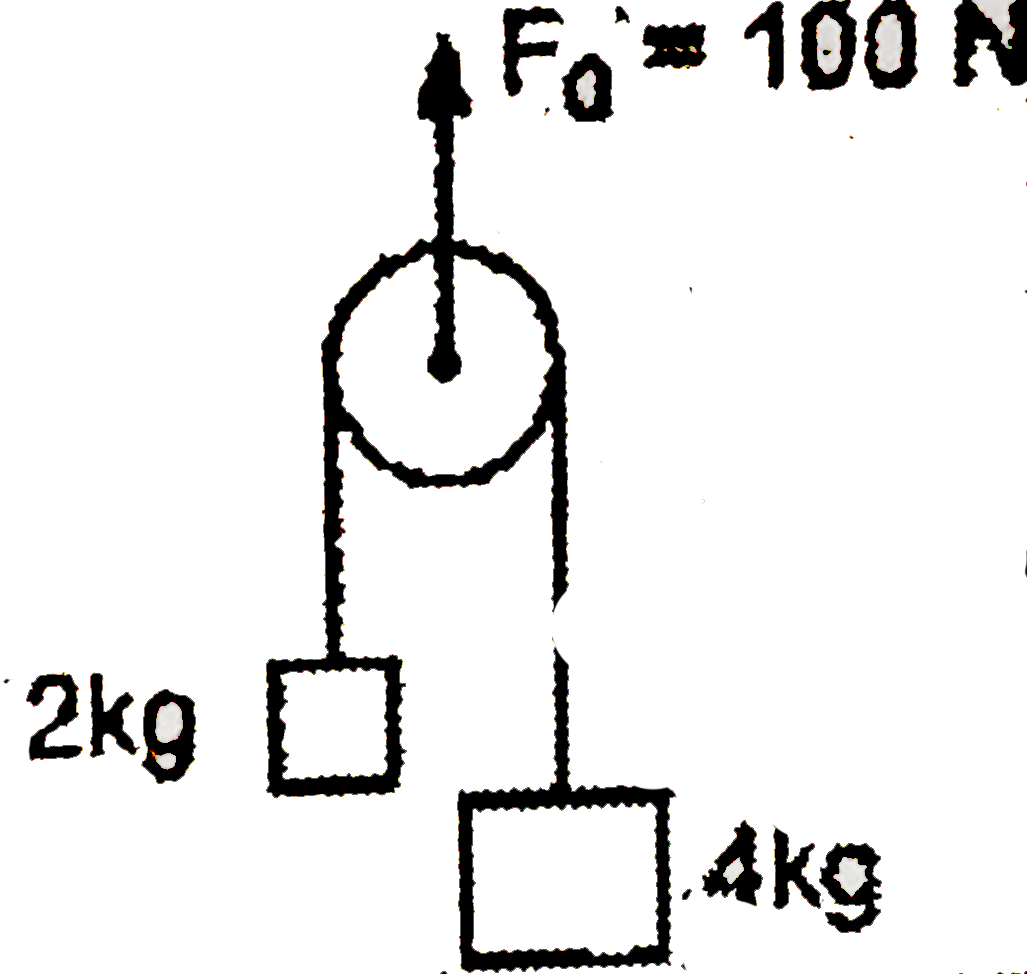Two blocks with masses m1=3kg and m2=4kg are touching each other on a frictionless table, as shown in figure-2.33. If the force shown acting on m1 is 5 N (a) What is the acceleration of the two blocks and (b) How hard does m1 push against m1 ?
![Two blocks with masses m(1)=3kg and m(2) = 4kg are touching each other on a frictionless table, as shown in figure-2.33. If the force shown acting on m(1) is 5 N (a) What is the acceleration of the two blocks and (b) How hard does m(1) push against m(1) ? [0.714 m//s^(2),2.85 N]](https://d10lpgp6xz60nq.cloudfront.net/physics_images/GAL_PHY_MEC_V01_C02_E01_043_Q01.png)
[0.714m/s2,2.85N]
Step by step video & image solution for Two blocks with masses m_(1)=3kg and m_(2) = 4kg are touching each other on a frictionless table, as shown in figure-2.33. If the force shown acting on m_(1) is 5 N (a) What is the acceleration of the two blocks and (b) How hard does m_(1) push against m_(1) ? [0.714 m//s^(2),2.85 N] by Physics experts to help you in doubts & scoring excellent marks in Class 11 exams.
Topper's Solved these Questions
- BOOK - PHYSICS GALAXY - ASHISH ARORACHAPTER - NEWTONS LAWS OF MOTIONEXERCISE - Practice Exercise23videos
NEWTONS LAWS OF MOTION
- BOOK - PHYSICS GALAXY - ASHISH ARORACHAPTER - NEWTONS LAWS OF MOTIONEXERCISE - Practice Exercise 2.21videos
NEWTONS LAWS OF MOTION
- BOOK - PHYSICS GALAXY - ASHISH ARORACHAPTER - NEWTONS LAWS OF MOTIONEXERCISE - Practice Exerice 2.11videos
NEWTONS LAWS OF MOTION
- BOOK - PHYSICS GALAXY - ASHISH ARORACHAPTER - LINEAR MOMENTUM & ITS CONSERVATIONEXERCISE - exercise 1.33videos
LINEAR MOMENTUM & ITS CONSERVATION
- BOOK - PHYSICS GALAXY - ASHISH ARORACHAPTER - RIGID BODIES AND ROTATIONAL MOTIONEXERCISE - Unsolved Numerical63videos
RIGID BODIES AND ROTATIONAL MOTION
Similar Questions
Three identical blocks each of mass M are along a frictionless table and a force F is acting as shown. Which of the following statements is false ?
 View Solution
View SolutionTwo blocks of mass m = 1 kg and M = 2 kg are in contact on a frictionless table. A horizontal force F(= 3N) is applied to m. The force of contact between the blocks, will be-
View Solution
Knowledge Check
- Question 1 - Select One
Three blocks of masses m1=1kg,m2=2kg and m3=3kg are placed in contact on a horizontal frictionaless plane as shown in figure. A force of 12 N is applied on m1. Acceleration of the system is
 A12m/s2B2m/s2C6m/s2D4m/s2
A12m/s2B2m/s2C6m/s2D4m/s2 - Question 2 - Select One or More
Two blocks of mass m1 and m2, resting on a frictionless table, are connected by a stretched spring and then released -
Aratio of speed of blocks is m2/m1Bratio of kinetic energy of blocks is m2/m1Ccentre of mass will move towards heavier blockDmechanical energy will remain conserve in this process - Question 3 - Select One
Three block of masses m1,m2 and m3 kg are placed in contact with each other on a frictionless table. A force F is applied on the heaviest mass m1, the acceleration of m2 will be
 AFm1BF(m1+m2)CF(m1−m2)DF(m1+m2+m3)
AFm1BF(m1+m2)CF(m1−m2)DF(m1+m2+m3)
Three identical blocks, each having a mass m are pushed by a force F on the Frictionless table as shown in figure.
What force does A apply on B?
 View Solution
View SolutionTwo blocks of masses M1 and M2 are connected to each other through a light spring as shown in figure. If we push mass M1 with force F and cause acceleration a1 in mass M1. What will be the magnitude of accleration in M2?
 View Solution
View SolutionTwo blocks of masses mi=2kg and m2=4kg hang, over a massless pulley as shown in the figure. A force F0=100N acting at the axis of the pulley accelerates the system upwards Then :
 View Solution
View SolutionTwo blocks of masses M1 and M2 are connected to each other through a light spring as shown in figure. If we push mass M1 with force F and cause acceleration a1 in mass M1. What will be the magnitude of accleration in M2?
 View Solution
View SolutionTwo blocks of masses m1 and m2 are connected to each other with the help of a spring. If pushing force F is given to the mass m1 providing acceleration a to it, then acceleration of m2 is
 View Solution
View Solution

